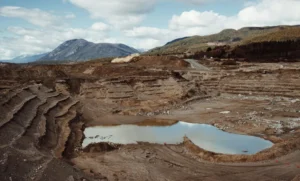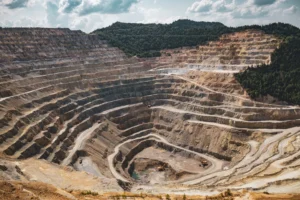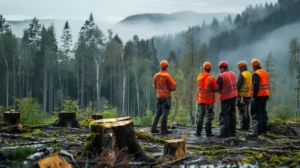Pioneer species play a crucial role in primary succession by colonizing barren environments and setting the stage for other organisms to thrive. They break down rocks, create soil, and introduce organic matter, which allows for the growth of more complex plants and animals.
Primary succession refers to the process that occurs where, previously no life has existed-like the areas following a volcanic eruption or a glacier retreat. Pioneer species are crucial in starting this process by changing the bare landscapes into thriving ecosystems.
In this blog, we will discuss the role of these pioneering organisms and their contribution toward recovery in an ecosystem. They allow life to get established in areas that once were lifeless.
Primary succession occurs in lifeless environments that have never supported life. These places initially lack soil, plants, or animals. For example, volcanic lava flows and newly exposed glacial rock surfaces are classic examples of where primary succession happens. It involves a series of gradual stages, starting with the launch of pioneer species and ending with a fully developed ecosystem.
The Importance of Pioneer Species
First species are the pioneer species that stabilize such extreme environments. Their critical features enable them to survive in soil-less and nutrient deficient environments. Some of the pioneer species include lichens, mosses, and hard grasses. These pioneer species occupy the vacant ecological niche in arid areas.
Initial Colonization of Barren Environments
Pioneer species begin the process of succession by forming the initial organisms that establish themselves in a vacant habitat. They usually colonize exposed rock or sand upon which most plants would not survive.
Lichens and mosses are examples of these pioneers, which cling onto the rock surface, slowly breaking it and thus clearing a way for the subsequent ecosystem development. Over time, these early colonizers create the conditions necessary for other plants and animals to thrive.
What is the Role of a Pioneer Species in Primary Succession?

1. Soil Formation and the Role of Pioneer Species
One very vital role pioneer species can play is in soil formation. As pioneer species, such as lichens, grow, they chemically break down rocks. At death, their decomposing bodies add organic matter, which aids in laying the first layers of soil. Without these early species, the environment would remain far too aggressive to support later plant growth.
2. Nutrient Enrichment: Boosting the Ecosystem
When the pioneer species start to establish, they begin to modify the soil by adding nutrients in it. Some plants directly add critical nutrients into the soil by methods such as nitrogen fixing. This facility to root will enable other plants to grow, and therefore allows the whole development of the ecosystem to continue.
3. Habitat Modification and Microenvironment Creation
These pioneer species enrich the soil and alter the environment where they live. They help maintain moisture, provide shades, and even create microenvironments that will foster other species’ growth. This gives way for further developed forms of life, providing a base for them.
4. Facilitating the Succession Process
When pioneer species have changed the environment, other plants that require more nutrients and better conditions move in. These new species, such as shrubs and trees, often outcompete the pioneers and take over. However, if the pioneer species had not prepared the ground, the subsequent species would not have been in a position to thrive. Hence, the succession in this primary succession stage goes from pioneer-dominated environments to more complex ecosystems step by step.
Conclusion
Pioneer species are crucial in converting a lifeless area into a rich ecosystem. They are some of the first to occupy seemingly barren environments and make the soil evolve, add nutrients, and alter the environment. They set the ground for other, more complex species, which thrive in ecosystems on foundations made possible by the pioneer species.
Their role in the primary succession stages presents how these hardy species are key to the recovery of seemingly uninhabitable environments.




